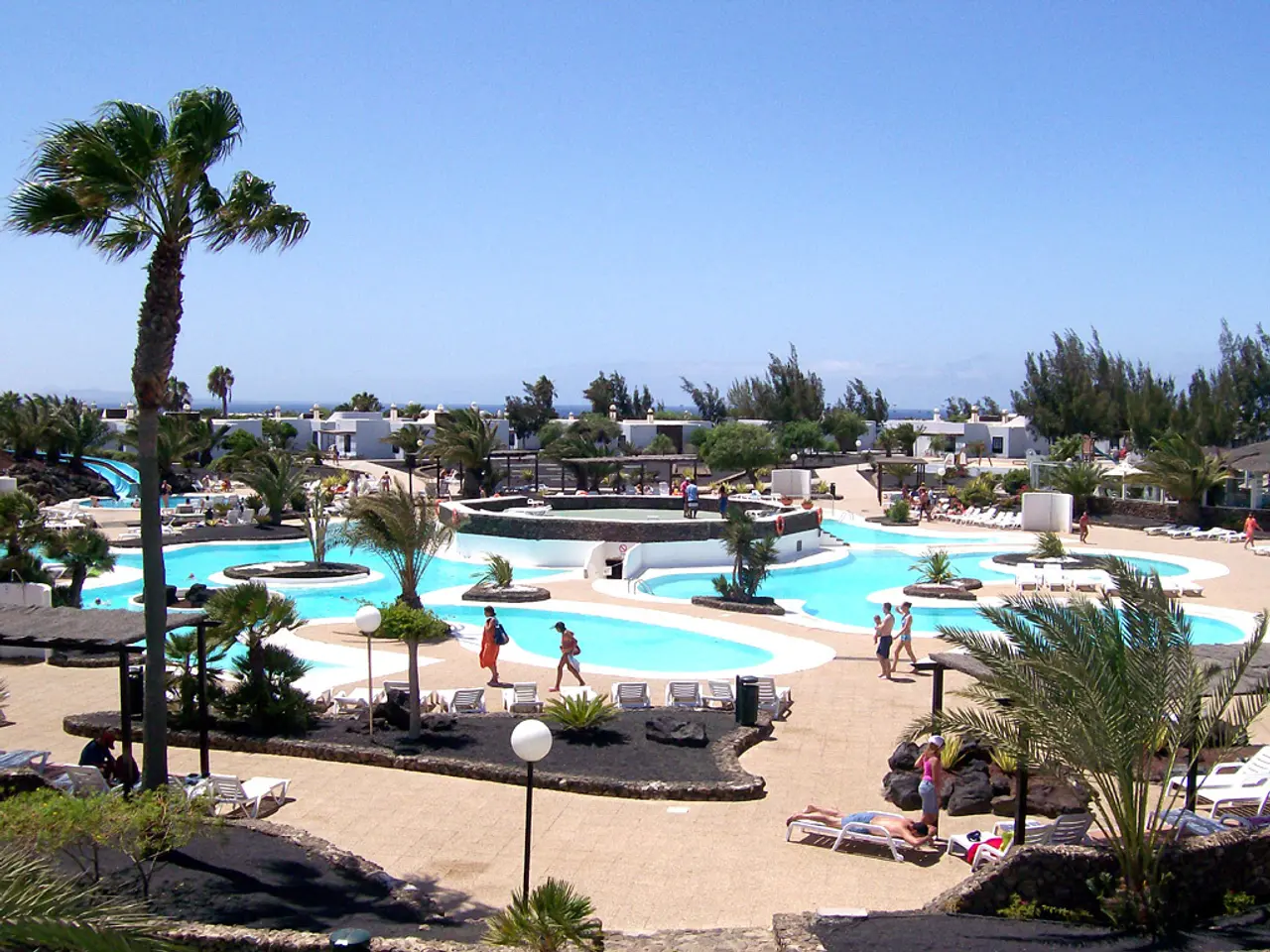Tourism serving as a medium for Aboriginal people to narrate their histories in Western Australia
In the remote and breathtaking region of Cape Leveque, nestled between the Indian Ocean and a craggy, red landscape, lies the small community of Djarindjin. This vibrant village, home to just over 1,500 people, is one of six Camping with Custodians campsites spread across the Dampier Peninsula.
Djarindjin's existence is rooted in resilience and resourcefulness. The community financed their campsite with earnings from a helipad they built as a refuelling stop for flying doctors. The only access to Djarindjin is via the Cape Leveque Road, a single trail that snakes through a flat expanse of red baked earth, studded with towering termite mounds, man-high flaxen scrub grass, and gnarled, heat-wrinkled trees.
The sea in Cape Leveque mirrors the sky, and there are no buildings above the treeline. This unspoiled beauty was once a stark contrast to Broome, a town nearby, which was a scruffy, boisterous den of industry built on buttons until the 1930s. Today, Broome is known for its uncrowded beaches, perennially sunny skies, coffee shops, and jewelry stores.
Aboriginal guide Neville Poelino leads tours of Broome, sharing stories of its rich history. He takes visitors to Streeter's Jetty, where Aboriginal divers harvested pearl shells and sent them all over the world. The pearl industry collapsed in the 1950s, but many of the divers stayed on and had families with Aboriginal women.
In Djarindjin, Bundy, a custodian, uses traditional methods to forage for mud crabs in the mangroves. He believes that the land tells stories of his lineage and where he belongs. The Stolen Generations policy, which forcibly removed Aboriginal and Torres Strait Islander children from their families, had devastating impacts on individuals, families, and communities. However, it also sparked ongoing movements for justice, reclamation of identity, and cultural preservation that continue to shape Australia's path towards reconciliation.
Camping with Custodians, a new venture, provides opportunities for travellers to learn about Aboriginal cultures in a meaningful way. A couple from Perth attended the camp to learn about Aboriginal culture, and another guest believes their son has been learning about it since kindergarten.
Rosanna Angus, a female tour guide on the Dampier Peninsula, leads boat outings to Ewuny Island. She grew up in One Arm Point on the mainland after living on Ewuny Island until 1974. She chooses to discuss history in her tours because many aspects of Aboriginal culture are considered 'men's business'.
Aboriginal people believe that the world was created in the Dreamtime by snake, emu, eagle, and kangaroo spirits. Rosanna wants to empower other women to earn a living from tourism. Bolo Angus, a guide in Dampier, grew up with his grandparents in the bush to escape the Catholic mission. He carries a teardrop-shaped shell engraved with ochre-stained symbols, which is a symbol of the rite of passage to manhood in his culture.
The Aboriginal Land Rights Act, which first took effect in the Northern Territory in 1976, has allowed First Nations Australians to take back traditional ownership of their lands. This act is supported by the WA government, making initiatives like Camping with Custodians possible.
Addressing historical trauma requires acknowledging past wrongs and supporting Indigenous communities' leadership in cultural preservation and decision-making, including care in grieving processes and safeguarding Indigenous knowledge. This journey towards reconciliation is ongoing, but initiatives like Camping with Custodians are steps in the right direction.
Sources:
- Australian Institute of Aboriginal and Torres Strait Islander Studies (AIATSIS). (2019). Stolen Generations. Retrieved from https://aiatsis.gov.au/collection/stolen-generations
- Australian Government. (2019). National Apology to the Stolen Generations. Retrieved from https://www.australia.gov.au/about-government/our-history-and-symbols/national-apology-to-the-stolen-generations
- Human Rights and Equal Opportunity Commission. (1997). Bringing Them Home: Report of the National Inquiry into the Separation of Aboriginal and Torres Strait Islander Children from Their Families. Retrieved from https://www.humanrights.gov.au/our-work/social-justice/campaigns/stolen-generations/bringing-them-home-report-national-inquiry-separation
- Reconciliation Australia. (n.d.). Reconciliation in Australia. Retrieved from https://www.reconciliation.org.au/what-we-do/reconciliation-in-australia
- The small community of Djarindjin, situated between the Indian Ocean and a rugged red landscape, has a rich history rooted in resilience and resourcefulness.
- The unspoiled beauty of Cape Leveque, with its past contrasting with the nearby town of Broome, is a testament to the preservation of the environment and the lifestyle of its communities.
- Aboriginal guide Rosanna Angus leads boat outings to Ewuny Island, sharing stories of the region's history and her personal journey, while advocating for other women to participate in the tourism industry.
- Initiatives like Camping with Custodians, which offers opportunities for travelers to learn about Aboriginal cultures in a meaningful way, are significant steps in the ongoing journey towards reconciliation and cultural preservation in Australia.




